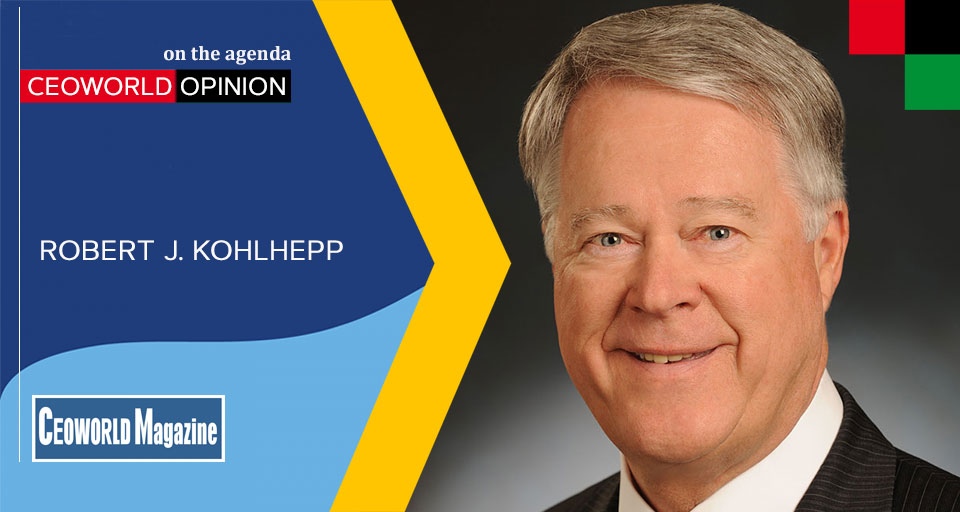Every Organization Needs a Core Objective to Live By

Every organization needs a core or principal objective to guide decision making. The lack of a principal objective results in decisions that are often made for the benefit of the organization’s hierarchy rather than all the constituents of the organization.
Having a principal objective in writing provides guidance and direction for everyone in the organization so that decisions are driven by what’s best for the entire organization. The principal objective should be clear and should be taught to everyone and reinforced by the actions taken by all staff, especially the people at the top.
Guided by a core objective or principal, or a singular mission, average companies or organizations can achieve great things. Determining that one core mission your organization will strive to achieve can be like a lightning bolt that unifies everyone’s efforts.
That was certainly true at Cintas Corporation, a uniform rental business, where I started as controller and eventually became CEO and then Board Chair in a career spanning 50 years. Cintas was steadfast in its commitment to maintaining and nurturing its corporate culture. A big part of that corporate culture was our principal objective — that one statement against which all decisions were evaluated.
Cintas’ principal objective was: “We will exceed our customers’ expectations to maximize the long-term value of Cintas for its shareholders and working partners.” We called our employees “partners” and we treated them like partners in every way. The three constituents in our principal objective were customers, shareholders, and partners. But our working partners were the drivers in accomplishing our principal objective. You can’t have happy customers or shareholders without happy partners (employees).
That one statement drove every decision we made. When we were faced with decisions like opening a new market, offering a new product, making an acquisition, raising pay rates, etc., we would always ask ourselves, “Will this decision exceed our customers’ expectations and maximize the long-term value of our shareholders and working partners?” Our principal objective simplified decision making. We would always focus on which decision would result in exceeding customer expectations and maximizing long-term value for shareholders and working partners.
A core or principal objective must be communicated and explained over and over again to make sure it’s understood and followed in all key decision making. While many organizations have a core objective, some organizations don’t practice what they preach. Take Enron for example. The vision statement it stated in its annual report reads: “Enron’s vision is to become the world’s leading energy company — creating innovating and efficient energy solutions for growing economics and a better environment.” That sounds clear, even noble, but Enron’s employees turned to unethical and even illegal practices because its upper management didn’t walk their talk. As a result, many people were hurt and some employees went to jail.
Communicating and embodying the core or principal objective should be taken very seriously. Realizing the importance of conveying the company’s principal objective and culture to every current and future partner, Cintas held seminars for all new management employees. We used a book we wrote entitled “The Spirit Is the Difference,” which described our principal objective and culture in great detail. We brought to life the principal objective by telling stories and giving examples of decisions we faced and how it guided those decisions.
One example was a situation where we had outgrown our plant in Houston and had to increase our capacity to handle future growth. We concluded that it made sense to build a second plant in that market. We asked the manager to recommend where he thought the second plant should be located. The manager was upset about the decision to build a second plant. He felt he was primarily responsible for the growth that was causing the need for additional capacity and didn’t think it was fair to split the plant apart into two plants as opposed to enlarging his plant.
I explained to him all the reasons we needed a second location, but he still didn’t think it was fair. So, I pulled out our principal objective and had him read it. I asked, “Do you see your name in that statement anywhere?” I told him we make decisions at Cintas based on what’s best for our customers, our shareholders, and our partners, not what was best for him, or me, or even the CEO. After talking it through, he understood and agreed on the plan.
What happens in organizations when no principal objective or vision statement exists, or one exists but isn’t followed? In such cases decisions are often made by ego, greed, and to benefit those at the top of the hierarchy. Without a guiding principal objective or vision, decisions are driven by what’s best for only a subset of the constituents at the top — not the customers, shareholders, and working partners (employees).
Use these steps to create and embody a core objective for your organization:
- Commit to writing what you believe your organization’s core or principal objective should be.
- Communicate and teach that principal objective ad nauseum, and then do it some more.
- Constantly reinforce that objective within your organization and introduce it to new hires. Be sure it is understood and applied consistently throughout the organization.
—————-
Written by Robert J. Kohlhepp.
Bring the best of the CEOWORLD magazine's global journalism to audiences in the United States and around the world. - Add CEOWORLD magazine to your Google News feed.
Follow CEOWORLD magazine headlines on: Google News, LinkedIn, Twitter, and Facebook.
Copyright 2025 The CEOWORLD magazine. All rights reserved. This material (and any extract from it) must not be copied, redistributed or placed on any website, without CEOWORLD magazine' prior written consent. For media queries, please contact: info@ceoworld.biz









